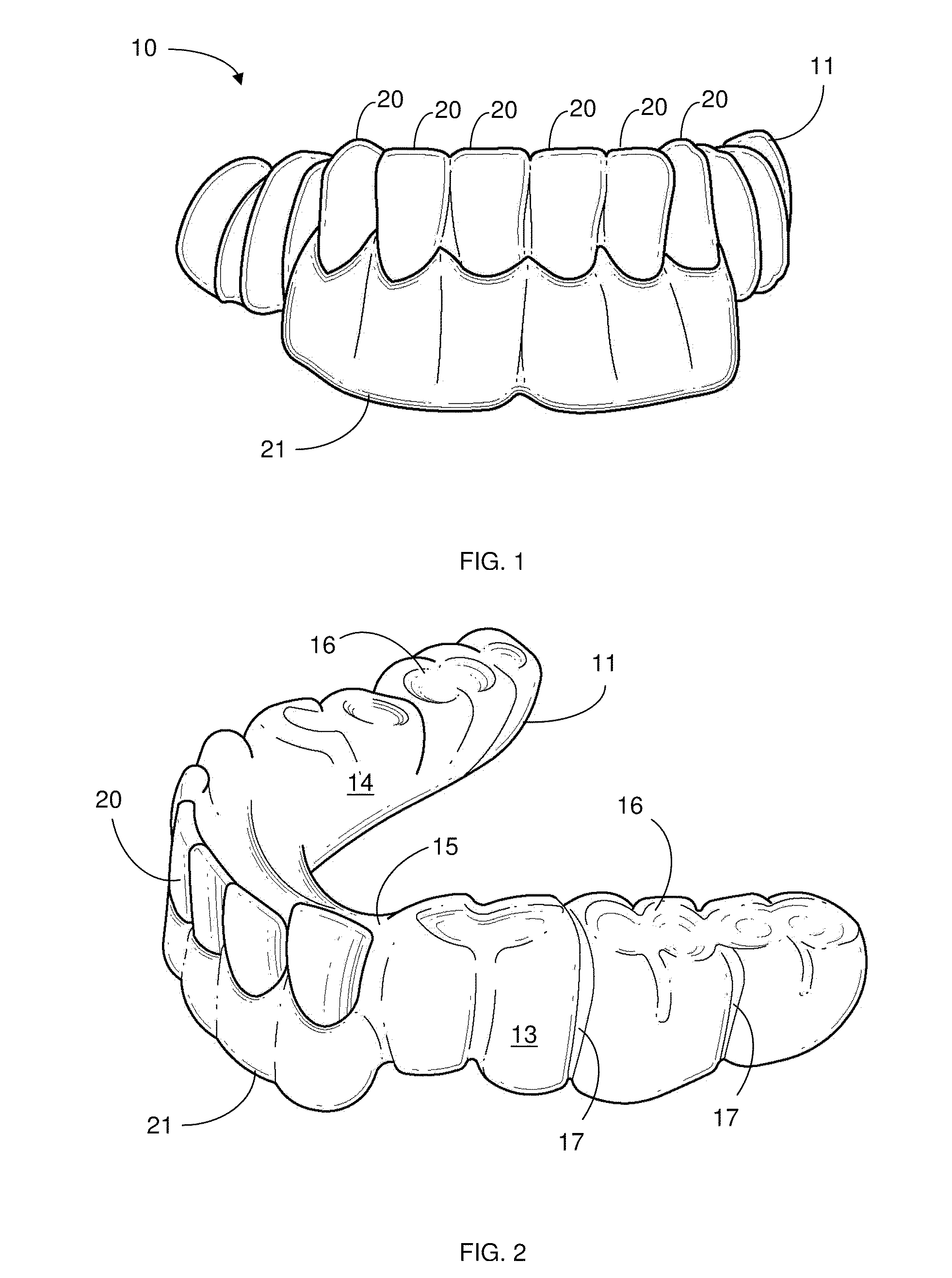Dental Splint
a dental splint and splint technology, applied in the field of orofacial disorders, can solve the problems of jaw and neck pain, jaw and neck function or malfunction, clicking and popping in the tmj,
- Summary
- Abstract
- Description
- Claims
- Application Information
AI Technical Summary
Benefits of technology
Problems solved by technology
Method used
Image
Examples
Embodiment Construction
[0017]Referring to FIGS. 1-7, there is illustrated the preferred embodiment of the present orofacial device designated generally as 10. The device 10 is used to treat orofacial disorders including malocclusion of the teeth; disorders and pain of the TMJ; muscle spasms and pain in the head and neck; neurological disorders of the head and neck, such as dystonia; and various types of headaches, including migraines. A removable splint 11 is formed or cast from a mold according to the mouth measurements of a patient that will wear the device 10. The splint 11 may be made of a hard, substantially inflexible material, such as plastic, including thermoplastic suck-down material; porcelain; metal; or heat-cured or cold-cured acrylic. Preferably, the splint is cast in a combination of cold- and heat-cured acrylic from a mold. The splint 11 may be cast in a single pour, or may be divided into segments that are later attached together, as in the preferred embodiment described below. The splint ...
PUM
 Login to View More
Login to View More Abstract
Description
Claims
Application Information
 Login to View More
Login to View More - R&D
- Intellectual Property
- Life Sciences
- Materials
- Tech Scout
- Unparalleled Data Quality
- Higher Quality Content
- 60% Fewer Hallucinations
Browse by: Latest US Patents, China's latest patents, Technical Efficacy Thesaurus, Application Domain, Technology Topic, Popular Technical Reports.
© 2025 PatSnap. All rights reserved.Legal|Privacy policy|Modern Slavery Act Transparency Statement|Sitemap|About US| Contact US: help@patsnap.com



